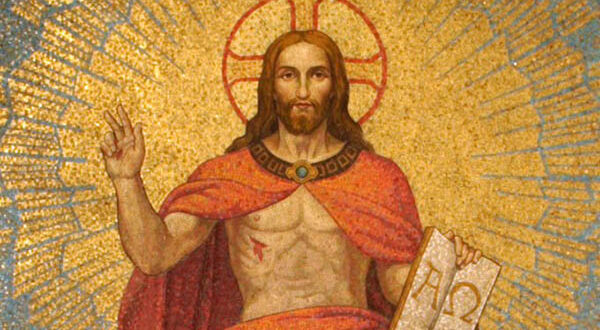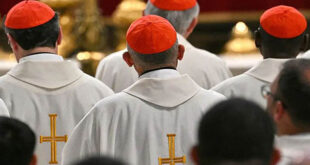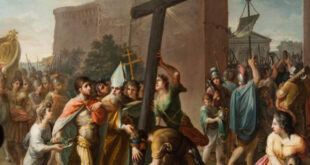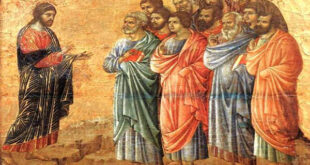Introduction: The Importance of Understanding Christological Heresies
In a world where ideas flow rapidly and eternal truths are often diluted in a sea of opinions, it is more crucial than ever to understand the roots of our faith. Christological heresies—doctrinal errors about the nature of Jesus Christ—are not merely topics of historical interest; they are eternal warnings that help us solidify our understanding of who Christ is and why His identity is fundamental to our salvation. As St. Paul said: “See to it that no one takes you captive through hollow and deceptive philosophy, which depends on human tradition and the elemental spiritual forces of this world rather than on Christ” (Colossians 2:8).
In this article, we will explore the main Christological heresies, their theological relevance, and how understanding them can illuminate our spiritual path in today’s world. Join me on this journey to discover how these doctrinal deviations, though dangerous, help us better appreciate the revealed truth.
1. Arianism: Was Christ Truly God?
One of the earliest and most influential Christological heresies was Arianism, proposed by Arius in the 4th century. Arius claimed that Jesus Christ was not truly God but a created being, albeit superior to all others. This idea undermined the very essence of Christianity, for if Christ were not God, His sacrifice on the cross would not have the redemptive power necessary to save humanity.
The Church responded firmly at the Council of Nicaea (325 AD), proclaiming that Christ is “consubstantial with the Father” (homoousios), meaning of the same divine nature. This dogma is fundamental because it reminds us that our faith is not based on a mere moral teacher but on the eternal Son of God, who assumed our humanity to redeem us.
Practical Application: In a world where many see Jesus as just a prophet or an ethical model, Catholics are called to boldly proclaim His divinity. This means not only believing in Him but also worshipping Him as God and fully trusting in His saving power.
2. Nestorianism: Was Christ Divided into Two Persons?
Another significant heresy was Nestorianism, taught by Nestorius in the 5th century. Nestorius claimed that in Christ there were two separate persons: one divine (the Son of God) and one human (Jesus of Nazareth). This division endangered the unity of Christ, essential for understanding how His sacrifice could reconcile humanity with God.
The Council of Ephesus (431 AD) rejected this teaching and affirmed that Christ is one person with two natures: divine and human. This mystery, known as the hypostatic union, is central to our faith. As St. John says: “The Word became flesh and made His dwelling among us” (John 1:14).
Practical Application: In our daily lives, the hypostatic union reminds us that Christ fully understands our humanity. We can turn to Him in our struggles, knowing that He is not only the all-powerful God but also a man who experienced our weaknesses.
3. Monophysitism: Was Christ Only Divine?
Monophysitism, which emerged in the 5th century, claimed that Christ had only one nature, a divine one, absorbing His humanity. This heresy, though well-intentioned in wanting to exalt Christ’s divinity, denied His true humanity, which is essential for our redemption.
The Council of Chalcedon (451 AD) corrected this error, declaring that Christ is “true God and true man,” with two natures united in one person. This truth is crucial because it shows that Christ is the perfect bridge between God and humanity.
Practical Application: In a world that often undervalues the human, Monophysitism reminds us of the dignity of our humanity. Christ assumed and redeemed it, inviting us to live our earthly lives with holiness and purpose.
4. Adoptionism: Was Christ Merely a Man Adopted by God?
Adoptionism, a heresy that resurfaced at various times, held that Jesus was a mere man adopted by God at His baptism. This idea denies the incarnation and the eternity of Christ, reducing Him to a mere instrument of God.
The Church has always taught that Christ is the eternal Son of God, not an adopted one. As St. Paul says: “For in Christ all the fullness of the Deity lives in bodily form” (Colossians 2:9).
Practical Application: In a culture that often seeks to minimize the sacred, Catholics are called to defend the truth of the incarnation. Christ is not just a model; He is the Savior of the world.
5. Modernism: Is Christ a Myth or a Symbol?
In the modern era, some theological currents have attempted to reinterpret Christ as a myth or a symbol, denying His historicity and divinity. This approach, though appealing to some, strips Christianity of its transformative power.
The Church insists that Christ is a historical and divine figure, whose resurrection is a real event that changed the course of humanity. As St. Peter says: “We did not follow cleverly devised stories when we told you about the coming of our Lord Jesus Christ in power, but we were eyewitnesses of His majesty” (2 Peter 1:16).
Practical Application: In a skeptical world, Catholics must be witnesses to the historicity and divinity of Christ. This means living in such a way that our faith is visible and attractive to others.
Conclusion: The Truth of Christ as a Guide in Our Time
Christological heresies, though dangerous, have helped us deepen our understanding of the truth about Christ. In a world full of confusion and relativism, these teachings remind us that our faith is based on objective and eternal truths. Christ is truly God and truly man, the Savior of the world, and our path to the Father.
I invite every reader to reflect on these truths and apply them in their daily lives. May our understanding of Christ lead us to worship Him with greater fervor, trust in His saving power, and share His love with the world. As St. John reminds us: “And this is the testimony: God has given us eternal life, and this life is in His Son. Whoever has the Son has life; whoever does not have the Son of God does not have life” (1 John 5:11-12).
May the truth of Christ illuminate our hearts and guide us in our daily walk. Amen.






